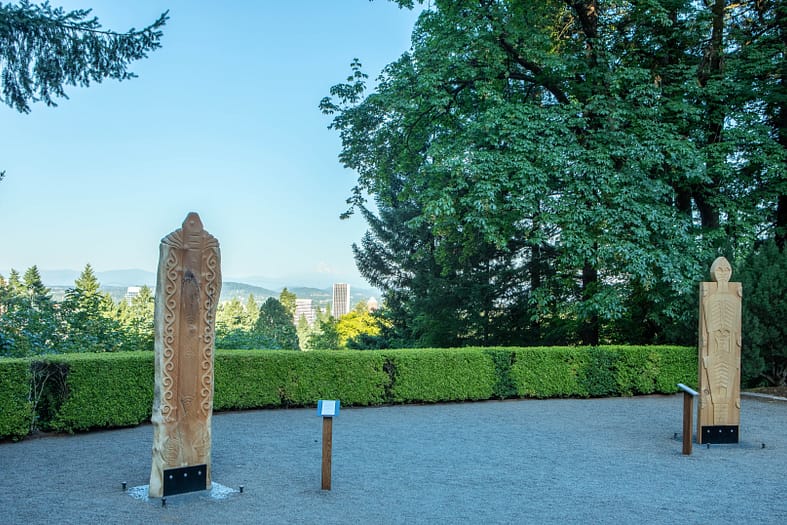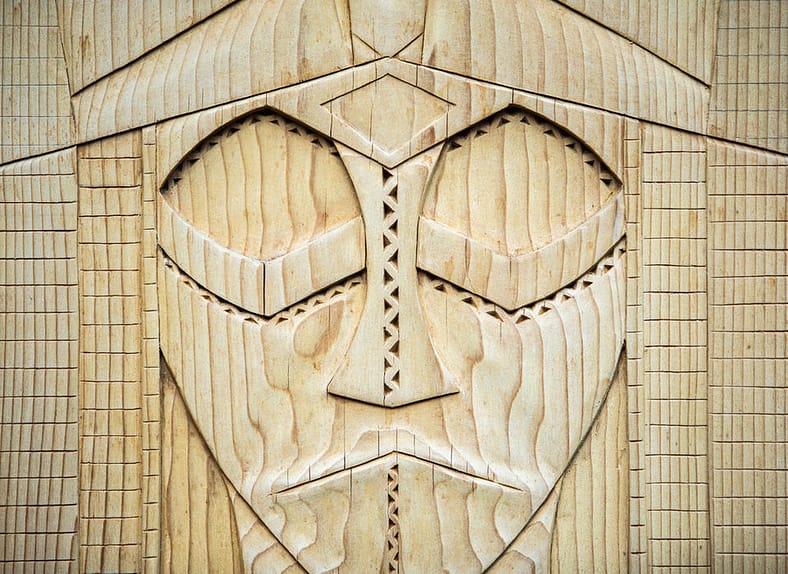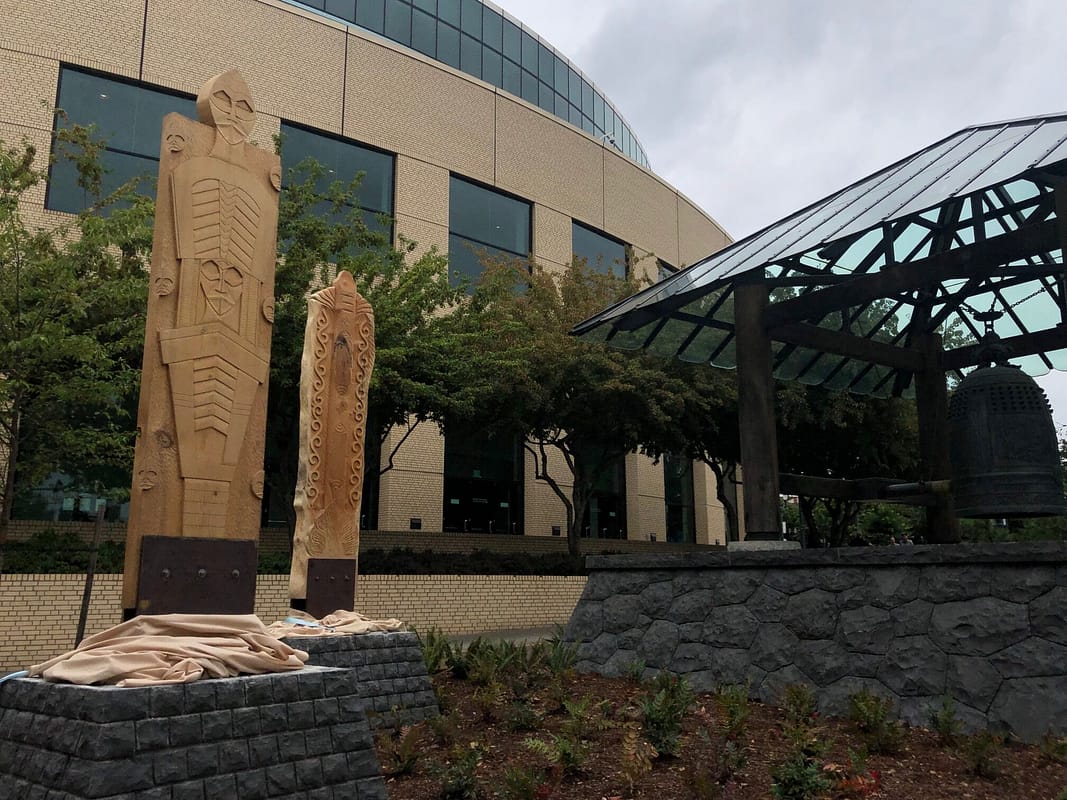
On Aug. 17, two hand-carved wooden planks known as power boards were installed alongside the Sapporo Bell just outside the Oregon Convention Center. Ingrained with symbolism and dedicated to the spiritual and natural worlds, these thematically similar artworks were created by members of two far-flung cultures: the indigenous Ainu of Hokkaido, Japan’s northernmost island, and the tribes of the Lower Columbia River Basin.
Both peoples are reclaiming their traditional arts to embrace once-forbidden identities.

“They’re looking at a void,” said Dr. Laura Mueller, Curator of Art at the Portland Japanese Garden, which hosted the exhibit, Forest of Dreams: Ainu and Native American Woodcarving. “So not only are they trying to repackage it, but they’re trying to find it, they’re trying to discover what that tradition is because it’s been lost. It’s been gone. It’s been eradicated, or suppressed at least.”


The power boards were commissioned for Forest of Dreams, on display at the Garden’s eastern overlook. Portland Japanese Garden itself was conceived during the aftermath of World War II as a way to heal the pain of internment and war. In addition to the power boards, the exhibition showcased woodcarvings by contemporary artists working in both traditional methods and modern motifs.
Originally Ainu and Chinook pieces were to be displayed separately, but Mueller and her staff intermingled the works after realizing the artists had created art which communicated across the Pacific.

“It shows you these peoples who, on both sides, have this rich connection to the land and environment. It’s very spiritual. It’s that connection that they’re one with the environment,” Mueller said.
Now, the power boards from both cultures are displayed outside the Oregon Convention Center next to the Sapporo Bell, recently rededicated in honor of the 60th anniversary of the sister-city relationship between Portland and Sapporo, Japan.

